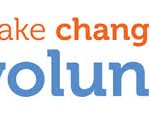Volunteer Participation Doesn’t Just Happen
— June 30, 2017

Tumisu / Pixabay
With HR and CSR leaders increasingly aware that strong corporate volunteer and giving programs are an essential part of a positive employee experience, the vexing question on everyone’s minds is: but how can I get employees to actually participate?
Corey Diamond, COO of volunteer consultant firm Realized Worth, believes the answer may seem contradictory: focus less on volunteer participation, and more on the volunteer experience.
Too often, volunteer opportunities are created and executed with a “check-the-box” mentality. Overworked, under-resourced managers are doing the best they can just to get something – anything – organized. Fortunately, modern tools make the process of managing campaigns easier and more efficient than ever before.
But a powerful and sustaining volunteer program doesn’t just come from ease of use.
“We’re big believers in the idea that experience leads,” says Diamond. “If people have a great experience, that’s the first step. From that, comes a deeper involvement with the nonprofit and hopefully a donation.”
What this means is that waiting until the fall to ask employees to donate to your holiday giving campaign is not the best way to maximize engagement. Instead, the challenge is to create a long-term relationship between your company and a nonprofit, where you can establish goals, benchmarks, and a demonstration of impact over time. Then find ways to connect your employees to that effort so that they can have an experience of personally making an impact.
In the best of worlds, this focus on experience leads to a more meaningful connection with nonprofit partners that translates to higher participation rates, more donations, and an enriched corporate culture that further fuels the employee impetus to give back.
Increasingly, corporate foundations are linking their giving to the broader company effort around a nonprofit. “Companies don’t want to just hand out grants,” Diamond has found. “They want a clear snapshot of how they’re impacting the community through grants AND employee volunteering AND giving. All of this becomes a seamless experience to support the individual participating; employees know that the company is backing their efforts with a big check, and they feel that they’re part of something much bigger.”
Placing a greater focus on the employee volunteer experience – as a pathway to increasing participation – doesn’t have to be onerous. As a matter of fact, the best way to do this is by turning to an asset that too few companies are leveraging, but should be: employee volunteer leads.
Companies that engage in best practices around volunteer programs delegate high-level volunteer “champions” as team organizers who can help lead programs and rally enthusiasm. Ideally these champions are linked through a volunteer council that is centrally organized by the CSR team but has the autonomy to localize the particulars of their events.
These champions can be given leadership training and be set free to become key influencers and leaders around their volunteer program. Champions later report back about how the program and campaigns are being received, ensuring that employees are given the opportunity to participate in ways that truly interest them, so that they develop a real connection to the nonprofit and to your program as a whole.
The volunteer experience is being viewed as part of an employee’s compensation package, all of which encompases the total employee exprience. Volunteering checks off a lot of boxes around connection, purpose and meaning, so it’s crucial that managers fine-tune the program in ways that motivate employees to participate and get them feeling that the company is fostering their best selves.
“We are seeing more and more activity in this area because the HR industry is more enlightened and thinking in this way,” Diamond notes. “Companies are taking a proactive, not reactive, approach to HR these days.”
A lot of companies reach out to Realized Worth to ask about benchmarking. “They want to know what other people are doing to see how their own programs hold up,” says Diamond.
Nothing wrong with that, and a “keeping up with the Joneses’”mentality is understandable, but Realized Worth leaders would rather approach this issue from the perspective of “what do my employees actually want?”
When you deepen the employee volunteer experience through a more comprehensive relationship with a nonprofit and cause over time, you pave the way for a better employee experience in general. From that, you’ll find that all the goodies that your company hopes to get from its volunteer and giving program – greater participation, impact, retention, recruitment, and engagement – flow more easily and validate your investment in this area.
Digital & Social Articles on Business 2 Community
(22)








